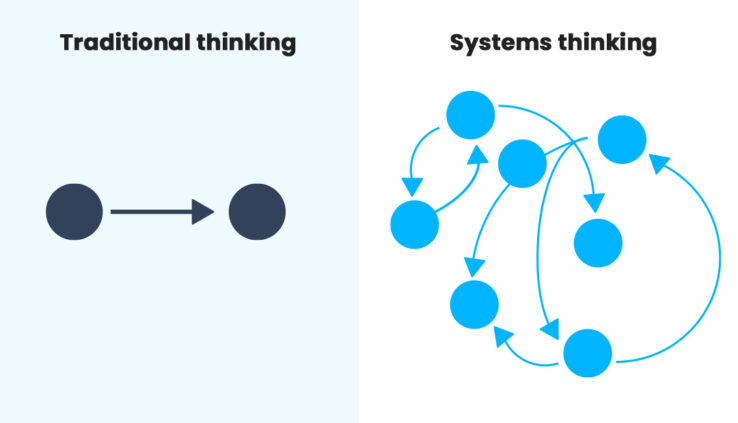Solved!
This website features the extraordinary man-in-the-middle (MitM) – and for good reason. His is and has been the most important role, by far, in all human society. He is the keystone species of the human ecosystem. That level of a social system containing the MitM functionality channels trajectories of behavior for the whole social system. It’s either success or failure. A middle ground between prosperous (Plan B) and malfunctional societies (Plan A) cannot exist. Can you be only half corrupt?
The unique sociotechnical knowledge developed to assist the MitM in his challenging role has produced the most powerful sociotechnical problem-solving tools and methods you will encounter in your lifetime. These newly-available methods for dealing with sociotechnical system (STS) complexity and irrational organizational behavior did not exist before the worldwide plague of organizational dysfunction (OD) was solved in 2013. Now, these powerful tools are yours for the taking. This website is loaded with them.
Putting these sociotechnical problem-solving methods into play in your situation can make a dramatic improvement in your life. Knowledge about social behavior in the operational reality gives you more control of your fate. You can choose happiness, your inalienable right, and attain it. No permissions necessary. There is nothing to buy.
Plan B is for people who want to gain their dignity and the satisfaction of a life well lived. It is an individualist creed where people are judged individually on their merits.
The two new problem-solving tools for solving OD issues work in tandem.
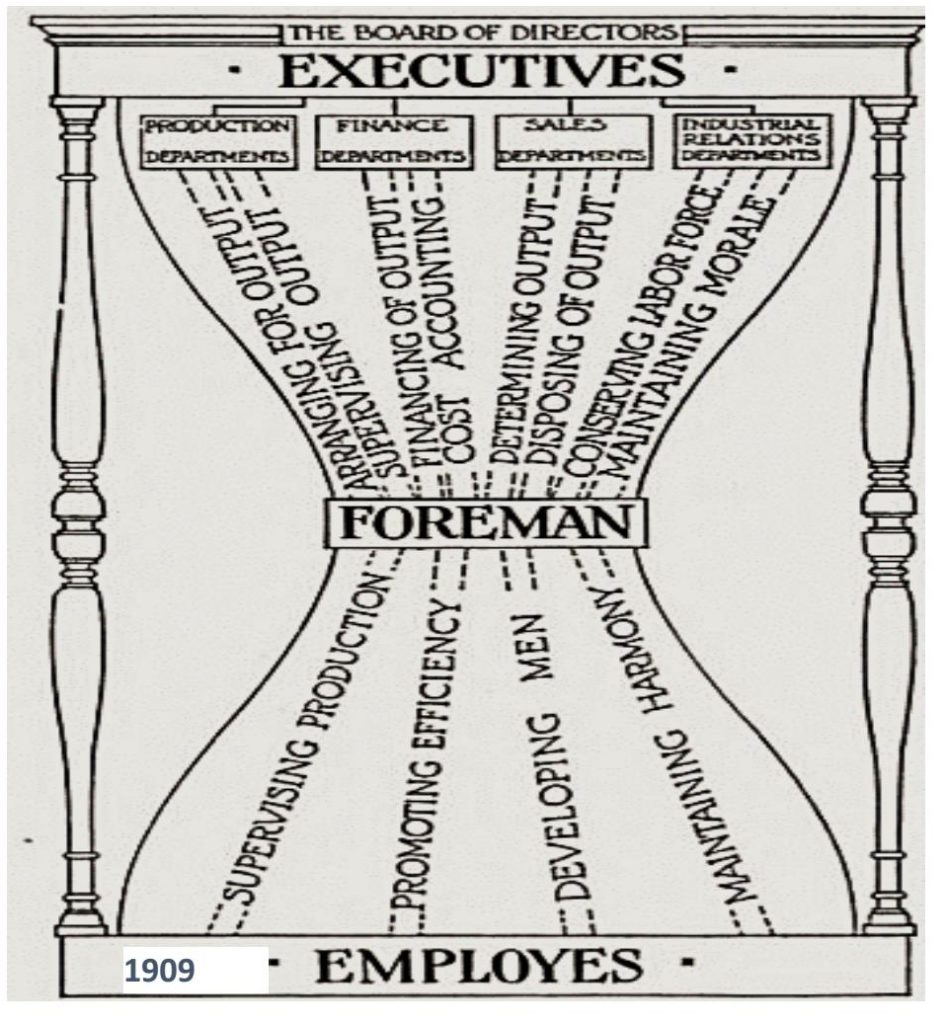
STS OD tool #1
Men in the middle comprise that singular level in all hierarchies where the imperatives, commands, and threats cascading down from the ruling layers of the social pyramid, expressed in vague language and disconnected from reality, interface with the revenue-producing workforce that operates in the brute fact of front-line production. It is a sociotechnical system (STS), an ecosystem with the MitM as its keystone species.
The term socio-technical system as used on this website is defined as any problem-solving, goal-seeking activity, a project, an expedition, that requires some sort of social system participation to attain the specified goal. In brute reality, almost all of the significant issues facing mankind, always complex, are sociotechnical. In the last twenty years the term has become part of the engineering handbook. Most engineers are MitMs in function.The language of the website is engineering speak and, preferring mathematical physics over empirical evidence, its derivations of Plan B are in engineering principles. The authors of this website are professional engineers with long careers as MitMs.
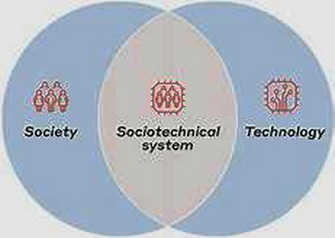
It is the exclusive role of the man in the middle (MitM) to ingest abstract, generalized marching orders coming down from the ill-informed head shed and formulate (invent) appropriate tasks for his crew in a language they can understand and execute. Although functionally responsible for organizational success, the MitM is talked down to by his reality-denying overlords as inferior and unworthy at the same time he is hassled by his crew as singularly responsible for the consequences they suffer daily struggling with the inanities of the malfunctional organization. That’s how you get to be a man in the middle, aptly named as such in 1827, early in the industrial revolution.
It is by understanding, supporting, and leveraging the MitM role, the keystone species of an ecosystem, intrinsic to every social hierarchy, that we solved the monster, ubiquitous problem of organizational dysfunction (OD), a barrier we set out to remedy in a sustainable way sixty years ago. Yes, sixty years testifies to our gross incompetence until you consider that the millstone of organizational malfunction went unlifted by human society, its victim, for twelve thousand years straight.
In STS, a very large variety of unfavorable and changing environmental conditions is encountered, many impossible to predict. Others, though predictable, are impossible to alter. E. Trist, 1951
The feat of solving the OD impasse consisted of providing:
- A generic method for taking a malfunctioning hierarchy, as-is, and transposing it into a flourishing social system.
- An effective method of sustaining and advancing the flourishing condition. Continuous improvement is necessary to neutralize the 2nd Law (of thermodynamics) degradation factor.
Examples of STS unsolved issues fill recorded history. These are threats to human existence that persisted despite great, protracted expenditures of effort:
- Fall of civilizations
- Warfare
- Business failures
- Inequality, homelessness
- Education
- Health and welfare, big medicine, pharma,
- Government ineptitude
- Inflation
- Big project ineptitude, failures
- Fractal corruption
To name a few.
History is filled with examples of nations moving in a progressive direction over time that altered the rules to favor the elites, forming two sets of moral standards. Sliding down the slippery slope to authoritarianism, first described by Plato, it is an inequity-producing society. The victim class needs to defect from ruling-class enslavement because it can, no permission necessary. This website shows how it’s done.
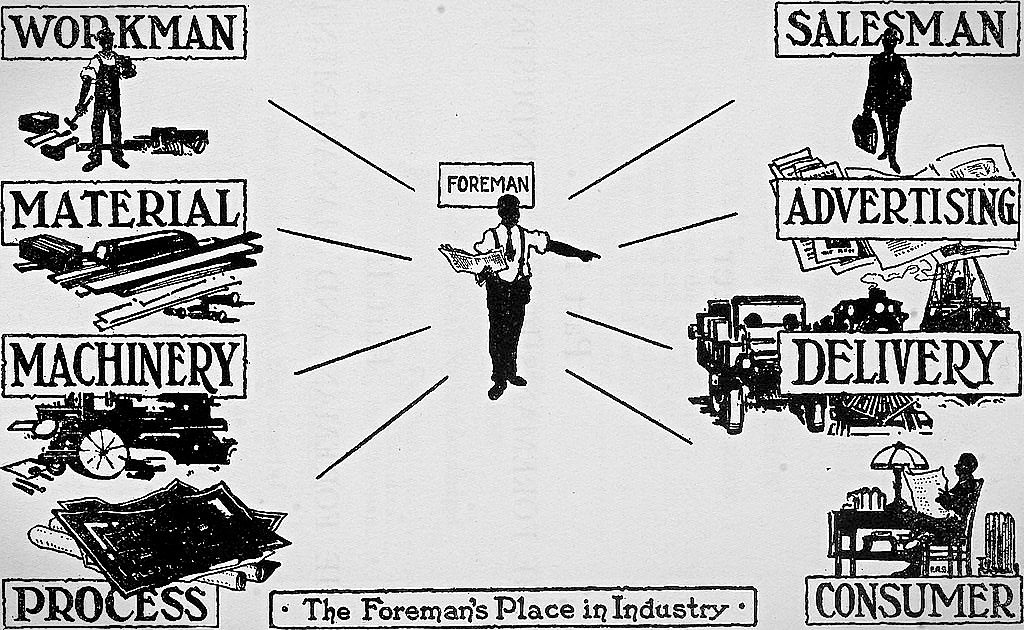
STS OD tool #2
Our POE legacy
The greatest contribution to humankind we made in our decades-long struggle with bringing Plan B to life is probably in what was developed about improving productivity using the process of elimination (POE).
Recognize when your issue with dysfunction is a system issue that perforce requires the POE for a resolution. Most people faced with a POE situation start off with an intuitive approach that makes matters worse and never recover. Take your time, gather and study the historical evidence, and get “system” right or disprove it before you try to fix “system.”
- Do not engage reductionist practices, only think system
- Do not attempt individual fixes for individually-recognized consequences
- Forget insurance
- All initiative is resisted.
- On a system issue, never assume you know all the causes or how they interact,
- Never assume you know all the consequences that cascade from the interaction of the unknowable causes of a system malperformance issue
- The truth is you won’t know all the causes and consequences until after you get the system fix in service and take measurements. You should expect surprises.
Construct a dynamic simulation of what you know about the system. There are many modular software packages that simplify that chore. Build a working model and validate it against known behaviors. Run the model under different conditions and measure the performance.
- Take your best shot at solving the system issue, configure and parameterize it, and run it on the dynamic simulator. Believe the results. Throw away what didn’t work and again take your best shot.
- You learn more from radical approaches than from incrementalism.
- Constantly prepare yourself to recognize the system fix when you do stumble onto it. Gather the criteria posed by your mentors as to what done looks like. Starkermann, Argyris and Ackoff proved to be spot on.
- The system fix has to be generic and win win. (Livingston’s second dictum)
Run your best guess from the simulator in real life conditions.
- Pray for luck. Your failures point nowhere. Each candidate for a system fix is a roll of the dice. Keep rolling the dice on a different carpet.
- You will only know when you have the generic system fix when you have it implemented on real dysfunctional organizations and it is successful and sustainable. Don’t worry, when it’s right, success will announce itself loudly and frequently. Everyone will know.
In 2013, Plan B was brought to life for the first time. It led to a quantum advancement in the productivity of the process of elimination (POE) for malfunctional sociotechnical systems (STS). This category includes anything novel, complex or otherwise unknowable that involves social system functionality. The POE is basically intelligence-informed trial and error on an industrial scale. All POE issues are projects (novel and temporary).
Social conditioning prepares everyone to be incompetent in POE work. You are trained to start in the wrong places and use fallacious assumptions in choosing what to try next after you fail.
In spite of its huge importance, the reality-based POE is not taught in any part of academia. This oversight is deliberate. No social system, subject to the intentional withdrawal of human adaptation to situations and contexts, can long survive.Only an individual can make headway with POE issues and when engaged, he is beyond the control of social system norms, groupthink, and rule-based compliance.
The individual attributes best suited to POE productivity include:
- POE experience, lessons-learned
- Reality-centered
- Low angst, has his act together
- Productivity-centered
- System think competency
- No social status to lose, a MitM
- Tenacious persistence in hostile social contexts

Like all government bureaucracies, academia has been receiving failing grades for centuries. It has shown amazing resistance to change for the better world-wide. Before Plan B existed, everyone facing a POE situation was on his own. He could expect criticism and pushback but no navigational guidance towards the goal.
The process of elimination is like engaging an unknowable obstacle course:
- There is nothing concrete about what “done” looks like. Nothing to navigate by.
- There are no guaranteed successful methods of investigation
- Conventional methods are loaded with false assumptions about social behavior
- There is no known or generic starting point. If there is a yellow brick road to success, no one knows where it originates. To start wrong guarantees failure (law of optimality)
- No one is responsible for satisfactory results
- Group choices of action, like all committees, groupthink are always losers
- The social context of a POE endeavor wants the effort to fail (POSIWID)
Since the solution cannot be determined from the consequences, there is no way conventional methods, business as usual, can go from effects to cause to solution in a direct manner. The only avenue open to arrive at a sustainable solution for sociotechnical issues is through the process of elimination (POE).
For individual malfunction, the POE has no performance aids. There is nothing about an individual apart from society that suggests what action he will take in a given situation. For social system malfunction, there are many performance aids gleaned from Plan B success that will dramatically improve POE productivity.
The nominal improvement in the efficiency of the POE methodology is substantial. What took us 50 years without Plan B experience would have been reduced to a decade. Now, any issue that fits the sociotechnical criteria provided will likely succumb to the updated POE in a few years.
If your dilemma fits the criteria for the STS-based POE, you can cut the nominal time for attaining a sustainable resolution by 85%. This means your social system can take on more issues and more complex enigmas for the same resources. For the uninformed POE, the amount of effort wasted on impossible pursuits cannot be overemphasized. Plan B means you can estimate and deliver solutions to complex projects on time and budget with confidence.
As presented above, the feat of weaponizing the process of elimination consists of:
- Avoiding those various, standard practices of business as usual certain to fail. Learning the lessons from the Plan B enterprise alone shaves 75% off the nominal effort, cost and schedule to attain the goal.
- Including those attributes of the solution known to be requisite for this category. Lessons learned from the Plan B enterprise, dynamic simulation, affirms that it has to be generic and sustainable.
Common characteristics of Plan A-unsolvable issues
Taking another perspective on the same fundamentals, the scope of these two methods has the following characteristics:
- The problem has a social system component crucial to delivering a solution
- The problem has a long-running history of failed assaults to fix it
- There is no success reference for navigation and benchmarking progress
- There is no goal specification for a sustainable solution
- No one is responsible for producing a solution
- The issues grow progressively worse with time. Only liquidation of the organization stops the pain.
Since the solution cannot be determined from the facts of the consequences, there is no way conventional methods, business as usual, can go from effects to cause to solution in a direct algorithmic manner. The only avenue open to arrive at a sustainable solution for sociotechnical issues is through the process of elimination (POE).
For individuals, the POE has no performance aids. There is nothing about an individual apart from society that suggests what action he will take in a given situation. For social system malfunction, however, there are many performance aids gleaned from Plan B success that will dramatically improve POE productivity.
How do you plan for a project that is going to be run by a dysfunctional organization? The only viable option is to lie. Unfortunately, that strategy only buys time. The outcome will be ugly.
The back story
In the early years of our rural upbringings, when not in school, was labor in agriculture. We attended community project days, thrashing days, and barn raisings. What no one could do alone as an individual was being done in collaborating groups of individuals that knew each other well as neighbors. School closed down for two weeks during potato picking season in the fall and everyone gathered and stored potatoes nonstop before the first freeze ruined the year’s crop.
We attended university with no-nonsense GI-bill veterans of WWII. Engineering was an introduction to the operational reality from a different perspective than agriculture that extended our knowledge and understanding of brute cause and effect in the world we live in. In our experience, society had acted in a rational manner towards us and we thought it perfectly natural. How else to conduct social affairs other than by the cooperation and collaboration based on mutual trust we had directly experienced?
When we joined industrial society after graduation from university, we took our rural enculturation with us. No longer protected by a rational social context, we soon we began encountering social behavior that made no apparent sense – for anyone. It had nothing like barn-raising days where volunteers from the community showed up on their own to complete a big important project. What it had was chain-of-command management from high authorities clueless about the reality of the work that needed to be done to reach the stated goal. Orders came down attached to overt threats of punishment for non-compliance. You were forbidden to do what you knew was right and required to go instead with reality-denying commands you knew had to be counterproductive.
Before 1965, we had experienced enough lose-lose organizational dysfunction (OD) to wonder if we could develop something that could be done about the lunacy with an ideology more aligned with our happy productivity experience. The challenge, featured in our conditions of professional engineering license, turned out to be ginormous, complex, entangled and we became single-minded about meeting it because we kept on failing. It was an expedition that channeled our lives into unrelenting frustration for decades. Everything we were taught in management school was failing our best efforts, year in and year out. Were we socially conditioned to fail?
When the 2013 achievement was validated as generic by additional implementations, unmatched and unprecedented, we finally felt confident enough to ask the big questions about humanity’s failure to solve its self-imposed threat to its own survival– a threat that has dogged humanity since the Establishment rulers made its discussion off limits, twelve thousand years ago.
As mentioned above, the history of mankind includes several other sociotechnical “challenges” it had to face that it never resolved. Endless failure of social norms channeled the Establishment view of these threats to species survival. In recent centuries it concluded that organizational man was hopelessly flawed in big problem solving capability, adamantly refusing to take personal responsibility for success, and confined to contrived zero-sum intramural and intermural competitions – finger pointing activities that resolved nothing. To verify that statement, follow the daily news.
Our unconstrained view, formed by our experience, holding there are no limits to what can be achieved by a collaborating human society, was vindicated in 2013 when we attained the sought goal – and knew it. An immediate testament to the success was the “reward” we also expected, “No good deed goes unpunished.”
This website leads off on sociotechnology problem-solving, goal-seeking because anyone who is not eager to improve his problem solving competency is not interested in change for the better. He chooses captivity in a toxic social context that progressively changes him for the worse. On what basis would you trust and cooperate with a person in reality denial and desperate to maintain his status quo? What can you expect from a closed-minded person, deliberately ignorant about the power of the Second Law of thermodynamics to destroy status quo on a streaming basis?
The stuff of a Plan B was first noticed by Eric Trist in 1962. Nothing came of it when the seam ran out and his Plan B example disappeared. His quote:
“What happened in the Haighmoor seam gave me a first glimpse of the “emergence of a new paradigm of work” in which the best match would be sought between the requirements of the social and technical systems. Some of the principles involved were as follows:
- The work system, which comprised a set of activities that made up a functioning whole, now became the basic unit rather than the single jobs into which it was decomposable.
- Correspondingly, the work group became central rather than the individual jobholder.
- Internal regulation of the system by the group was thus rendered possible rather than the external regulation of individuals by supervisors.
- A design principle based on the redundancy of functions rather than on the redundancy of parts characterized the underlying organizational philosophy which tended to develop multiple skills in the individual and immensely increase the response repertoire of the group.
- This principle valued the discretionary rather than the prescribed part of work roles.
- It treated the individual as complementary to the machine rather than as an extension of it.
- It was variety-increasing for both the individual and the organization rather than variety-decreasing in the bureaucratic mode.”
The work organization of the new seam was, to us, a novel phenomenon consisting of relatively autonomous groups interchanging roles and shifts and regulating their affairs with a minimum of supervision. Cooperation between task groups was everywhere in evidence, personal commitment obvious, absenteeism low, accidents infrequent, productivity high. The contrast was large between the atmosphere and arrangements on these faces and those in the conventional areas of the pit, where the negative features characteristic of the industry were glaringly apparent. The men told us that in order to adapt with best advantage to the technical conditions in the new seam, they had evolved a form of work organization based on practices common in the unmechanized days when small groups, who took responsibility for the entire cycle, had worked autonomously.
To repeat, sociotechnology, a term coined during WWII, is the marriage between the objective/technical operational reality and the subjective psychology of social behavior when something tangible, a project, needs to be done to address a need or a threat to social stability. The interaction of the marriage, and nothing else, determines whether or not the project will be successful. Technology can never eliminate the social dependency. Happy social systems can never eliminate the influence of advancing technology on survival of our species without taking action. The marriage cannot be annulled.
Advent of Plan B
The social system impasse we broke through in 2013, was to transpose a malfunctional social system, as-is, into a flourishing, sustainable one. It was an achievement that changed our lives in many happy ways. Still.
Once we had possession of the complete success reference for OD and could do before-and-after social system performance comparisons, three quick lessons were learned:
- The variety of consequences produced by organizational dysfunction (OD), called Plan A, was far wider and deeper than we had reckoned. There were significant correlations among consequences we had grossly underappreciated. There were significant connections among causes that we only noticed after the fact of Plan B. They manifest as a set and exhibit as a set.
- The variety of benefits from installing the sociotechnical solution, Plan B, was far wider and deeper than simply recovering the productivity lost to OD (Ca’canny). These profoundly positive social system capabilities had been completely suppressed. We had no idea they were embedded in Plan B until they spontaneously appeared after the core system fix for OD latched-in. They manifest as a set but exhibit independently and unpredictably. The benefits of positive reciprocity, as an example, are dependent upon local particulars and they take trust-building time. The bonus positive benefits of the OD fix have no upper limits. Multiplying the quantity of creativity of the now-collaborating social system by two orders of magnitude can beam things up anywhere.
- For issues of the OD STS, there was no guidance for running the POE, except the boldface lies of social conditioning. Once we had measured what had been achieved, demonstrable, we considered applications to significant social system entanglement problems in general. Competition is toast.
The fix had to be social-system generic. Standalone, incremental improvements have never worked. In Plan A, reductionism and piecemeal fixes of consequences, subject to the Nash Equilibrium, are notoriously fleeting. Multiple implementations since 2013 have confirmed this verity. It validates that the central player in OD is invariant human nature. The common denominator of social behavior we all share comes from our Stone Age genome.
When we had accumulated enough evidence regarding our STS OD fix, we ventured up to a multidisciplined level far above the mentor line to cogitate: Was the same set of barriers we faced in delivering Plan B common to other sociotechnical problem-solving failures? Would our methodology for fixing organizational malfunction apply to other kinds of STS problems facing the same social system barriers? Is the standard business-as-usual approach for engaging big, significant, complex STS problems fundamentally incompetent for modern times? Would the generic STS OD fix work on chronic social problems such as quality of life, and inequality?
Dealing with the vicissitudes of the operational reality in the present and preparation for the arriving future is basic to species survival. As anyone can see, failure to solve the sociotechnical problems that can extinct our species will extinct our species.
Fractal corruption
From the STS standpoint, it’s amazing how little systems-think has been devoted to understanding the insidious, systemic nature of a fully corrupt collective and answer the question why there are no half-corrupt social systems? Accordingly, feigned fuss about corruption exposed is confined to specific cases in an isolated, haphazard manner. The ubiquity of organizational corruption, common in Plan A, suggests a strong link to organizational dysfunction. In reality, the malfunctional social system is a hotbed for corruption. Irresponsibility for consequences provides the cover for covert activities.
When the institutional ensemble is 3-D fully corrupt, such as the current USA government, all branches and its media, it can’t solve the issues and problems it can’t avoid. Consequences just accumulate. Without trust, the ruling class is reduced to fighting off any demands for self-improvement. With closed-minded, reality-denial, it’s only a matter of time until the money runs out. That’s why dysfunctional organizations always come to their end by implosion.
Systemic STS corruption has common denominators:
- The ruling class, unable to increase prosperity in the STS it “controls,” the 2½ rule, finds it can increase prosperity for itself concealed by the opacity and irresponsibility of OD operations.
- There is no appropriate goal specification, what “done” looks like. No way to measure progress. Thereby, there is no way to detect “errors” in their infancy.
- Since STS corruption is fractal, its signs are everywhere:
- Distrust-based operations, negative reciprocity
- No inalienable rights
- Opacity
- Undiscussables
- Elephants in room
- No running productivity information
- Drive management
- High turnover shields corruption
- Resistant to change, no resilience
The reasons why corruption cannot exist in a Plan B STS include:
- Responsibility for results is explicit and authentic (the keystone)
- Trust is highly valued and cultivated
- The standard of care moves with goal-seeking progress
- Productivity measures are publically displayed
- Transparency, no undiscussables, no elephants
- No class distinctions, no losers
- Inalienable rights, square deal
- Corruption is detected as an error and repaired before productivity is affected
Guess the performance differential between a corrupt, malfunctioning organization and a flourishing one.
Plan B lessons-learned about social relationships
Plan B STS experience has produced several lessons-learned about healthy relationships between the producers and the authoritarians in a hierarchy. There is a deep contrast between the values defining the reality-denying head shed and the value system of the reality-centered workforce. Bridging the gap is impossible on several fronts.
When the MitM personalizes with his crew members, he is reinforcing the highly-successful master/apprentice relationship. When the MitM attempts to personalize with his rulers all he discovers are the unsurmountable, irreconcilable differences. There is no common language.
Effective social system relations in tall hierarchies varies by level. The best behavior strategy for relating to the producing working classes is quite different from that best for relating to the entitled consumer classes. In relating to the reality-deniers, the safe strategy for the reality-centered is neutral subject matter. If you initiate conversation, only mention their credentials and high rank attainments. If you are spoken to, answer in techno-speak. Under no circumstances attempt to enlighten reality deniers about what is organizationally attainable, unless you want to witness catatonia.
Since gaining reality knowledge is anathema to reality-deniers, there can be no benefit package for the closed-minded. They have barricaded themselves against change. Without entropy extraction, the 2nd Law brings progressive degeneration. While the reality-centered workforce deals with entropy as it goes, reality deniers cannot perform the necessary steps. Nothing is more “real” than the 2nd Law. Even black holes bend their knee.
Entitled consumer class
- Reality denial
- Social status by opinion
- Closed-minded
- Untrustworthy
- Rule-based
- Irresponsible for consequences
- Unavoidably corrupt, outside the 2½ rule
- Opaque operations, concealed performance record
- Goal-seeking incompetent
- Held together by groupthink, opinions, a common language, and producer largess
Producer classes
- Reality-centered
- Open-minded
- Transparent, ops within 2½ rule
- Trust-based collaboration
- Social status by performance
- Authentically responsible for good results
- Corruption impossible
- Goal-seeking competent, resilient
- Held together by the common language of reality and mutually-observed productivity performance
Available MitM benefit package
- Angst blowdown – health and internal energy
- More productive goal-seeking
- Avoiding losers
- Including requisites
- Foreseeability
- Social status by performance
- Transparency, silence breaking
- Authentic responsibility for good results
- Trustworthy
- Syndication
- Enlightenment about the social power of the MitM role
Available social system benefit package
- Step productivity increase (Ca’canny antidote)
- Avoiding loser practices
- Step health and safety increase
- Step turnover reduction
- Positive reciprocity
- Step competitive advantage
- Step resiliency increase
- Franchise Plan B
Plan B STS benefit schedule
Functionality – Nominal time to manifest
- Keystone turnover normalized – 1 week after program KO (kick off)
- Keystone angst blowdown – 3 weeks after KO
- Workforce turnover normalized – 2 months after KO
- Full recovery of withheld productivity – 3 months after KO
- Administrative load reduction recognized – 5 months after KO
- Positive reciprocity – 10 months after KO
- Resilience – 12 months after KO
- Competitive advantage – 14 months after KO
- Franchise – 20 months after KO
Validation
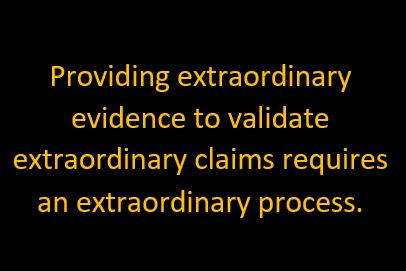
As you can well imagine, a half-century of expedition experience in developing and promoting a fix for organizational malfunction taught us plenty about the sociology of rejection. The first decades were wasted following the methods taught to us in graduate schools of management. Sunk costs, the lot.
When we were rejected because we had no installations to “Show Me,” it made perfect sense. When we did have successful implementations in operation for in situ audit and rejection was still the response, we learned the “Show Me” motto for management buy-in was a deliberate lie. That’s when our focus shifted to the value system in use by the reality-denying ruling classes. The head shed values many factors higher than a flourishing organization – making a folly of attempts to validate and persuade by mathematical physics.
Accordingly, you are cordially invited to visit Plan B implementations, with transparency featured, for on-site examination and evaluation. You will be free to interview keystones and workers as you see fit. You are also invited to arrange for demonstrations in your shop with your keystones of any part of the Plan B ideology you choose. You don’t even have to announce your choice ahead of time. In no way does your refusal to audit implementations or host in-house demonstrations controvert the Plan B ideology and its benefit package.
Refusal to partake completes the demonstration of your value system in use to yourself. It’s your choice, your destiny. In the end, for everyone, the 2nd Law always prevails.
Implications of rejection
As stipulated, refusal to investigate implementations of the fix first-hand, reality denial, in no way controverts the validity of the fix. It just attests to the value system in use. The fix exists. Notice that you gave the benefit packages up, subconsciously, intuitively, and instantly. Once again, denial of this reality does not alter the fact of Plan B existence. Choosing unhappiness in exchange for the higher values you embrace is your free and deliberate choice. The consequences of your choice are also yours.
As one example, happiness can be attained by your own volition. There’s nothing to buy. No permissions are necessary to do what it takes. How can the social status of the person matter more to him than his happiness, than living in a happy social system? The truth is that the majority exhibits a value system (groupthink) that wants nothing to do with the pilgrimage to happiness. POSIWID
Just maybe?
One theory that makes sense of the Establishment preoccupation with social status by authority rank (opinion) is success in procrea ion with as many participants as practical. Genghis Kahn, for one example, managed to father hundreds of offspring. It is common knowledge that men with high authority, like politicians, have many more wives and mistresses than the average male. While women can admire men who are talented producers, it’s the rich and notorious dudes that score. Henry Kissinger called high authority the ultimate aphrodisiac.
It takes little imagination to watch the ruts of various social species on cable TV documentaries and mentally substitute Homo sapiens for the elk, gorillas, dolphins, hippos, goats, and you name it that battle on to the death over procreation rights. What does the endless rut over social status by opinion do to help solve the significant threats that society cannot avoid? Absolutely nothing.
One way of looking at a tall hierarchy, (POSIWID), is to see the purpose of the organization as providing the resources to sustain the head shed, via the workforce productivity, while the ruling class engages in endless ruts over social status by authority (opinion), classical palace politics.

Plan B – the only way the barn goes up in a day.
Next
For those wishing to continue learning about STS Plan B, the NEXT page in sequence illuminates the connection between the Plan B ideology and happiness, one of your inalienable rights.
Views: 116


